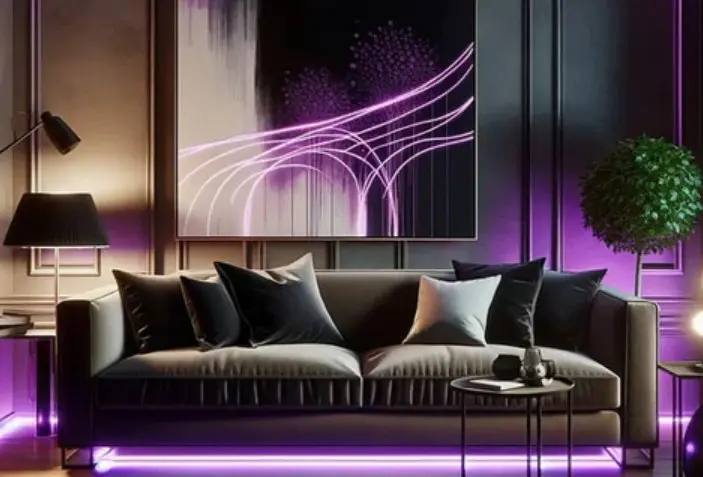Key Takeaways
- Energy expenses and the environmental impact may be significantly decreased by switching to energy-efficient lighting.
- An effective lighting retrofit involves assessing current lighting, choosing the right solutions, and managing the installation.
- Understanding the benefits and challenges can lead to successfully implementing lighting upgrades.
Understanding Energy-Efficient Lighting
In today’s environmentally conscious world, moving towards energy-efficient lighting isn’t just good for the planet but a wise financial decision. The transition involves using technology like LED lighting, which continues evolving and offers incredible benefits over traditional lighting methods. Store lighting retrofits present a beneficial shift by replacing outdated, energy-hungry systems with modern, efficient alternatives that provide excellent returns in the form of reduced electricity bills. The U.S. Department of Energy highlights that LED white lighting technology can cut energy use by a staggering 75% while extending the lifespan of light fixtures by up to 25 times compared to incandescent lighting.
Steps to a Successful Lighting Retrofit
Undertaking a successful lighting retrofit requires a thorough and methodical approach. The initial step involves detailed assessment—an evaluation process that identifies existing inefficiencies and sets the baseline for improvement. This evaluation considers current power consumption and lighting quality in various environments.
- Assessment: Implementing thorough energy audits can provide a comprehensive understanding of the lighting system’s current state, pinpoint areas for enhancement, and deliver actionable insights on reducing consumption.
- Selection: After identifying inefficiencies, selecting new lighting solutions involves balancing cost, performance, and aesthetic requirements. The aim is to find systems that promise the best combination of efficiency, low environmental impact, and adaptability to existing infrastructure.
- Implementation: Proper planning is crucial to the successful installation of new systems. This includes scheduling installations at times that prevent interference with normal operations and ensuring that installations adhere to safety standards.
- Verification: Once new systems are operational, it’s necessary to confirm that they meet performance standards and deliver on promised energy savings. Benchmarking against initial assessments validates the project’s success and aids future improvement strategies.
The Economic and Environmental Benefits
The advantages of transitioning to energy-efficient lighting solutions extend well beyond financial gains. While there is an immediate reduction in energy bills, businesses and homeowners benefit significantly from decreased maintenance costs over time due to the longevity of efficient lighting systems. Economically, it allows for reallocating funds that would otherwise be spent on excessive energy and frequent replacements.
Sustainability is another critical result of this transition. By making conscious decisions regarding energy use, carbon emissions can be significantly lowered. Energy-efficient practices are pivotal in the fight against climate change, driving us closer to achieving longer-term sustainability and ecological conservation goals. Embracing such practices reflects a commitment to a healthier planet, illustrating that businesses and individuals can thrive while meaningfully impacting global energy consumption.
Common Challenges and How to Overcome Them
Despite its numerous advantages, the path to energy-efficient lighting is fraught with challenges. Perhaps the most significant barrier is the upfront investment required for new systems and technologies, which can be daunting for some organizations. However, assessing investments through the lens of long-term savings and efficiency gains can help offset these initial expenses. In addition, financial incentives, rebates, and grants are often available to ease this transition.
Integration complexity is another common challenge, particularly when integrating new solutions with existing technologies. Achieving compatibility necessitates a detailed understanding of current systems and precise planning. Partnering with experienced contractors who are well-versed in the intricacies of lighting technology can streamline the process, ensuring that implementation is smooth and results in seamless operation.
Case Studies of Successful Lighting Retrofits
Exploring real-life case studies offers insight into the tangible benefits of lighting retrofits. Numerous businesses have successfully transitioned, reporting substantial cost reductions and improved employee productivity thanks to enhanced lighting quality. These case studies demonstrate that thoughtful strategic planning and a willingness to invest in the right technology lead to successful project outcomes.
For example, a retail chain might find increased customer satisfaction due to brighter and more appealing lighting, boosting sales. Offices report improved worker performance in well-lit environments, as good lighting benefits alertness and well-being, thus underscoring the ripple effect that an investment in quality lighting can create.
Future Trends in Lighting Technology
As technology advances, the future of lighting looks incredibly promising. Innovations such as intelligent lighting systems and adaptive controls are broadening the horizon of what lighting can achieve. Modern systems allow for greater customization, efficiency, and networked connectivity, offering users precise control over lighting conditions. This technology enables automatic adjustment based on occupancy or ambient light levels, optimizing energy usage and enhancing comfort.
Furthermore, lighting systems are becoming increasingly connected with other building technologies as the Internet of Things (IoT) is widespread. This integration provides insights that can further promote energy savings. The push towards more sustainable, intelligent buildings positions lighting at the forefront of architectural and environmental design, leading to spaces that are not just functional but also forward-thinking.
Also Read-The Guide to Finding Your Dream Home with a Real Estate Expert
